Issue #0 Launch and Conversation
“We tell ourselves stories in order to live.” These are the now famous, oft-quoted words chosen by the American writer Joan Didion to open “The White Album,” her autobiographical essay on living in Los Angeles in the 1960s. Today, they are just as prescient—not only for writers, but for anyone living in an urban environment, where the understanding and experience of the city is in constant flux. For those working in the field of architecture and design, these stories have long influenced the shape and forms cities take. Whether real or imagined, they are what forA on the urban as a journal aims to make more legible and visible.
In September 2021, as part of the journal’s launch at the 17th International Architecture Exhibition of La Biennale di Venezia, the journal’s editors invited Lesley, Lokko, John McMorrough, and Liam Young—all architecture practitioners as well as writers and educators—to reflect on how stories and cities inform one another, and what the imagination can offer architecture. The following is an edited transcript of that conversation.
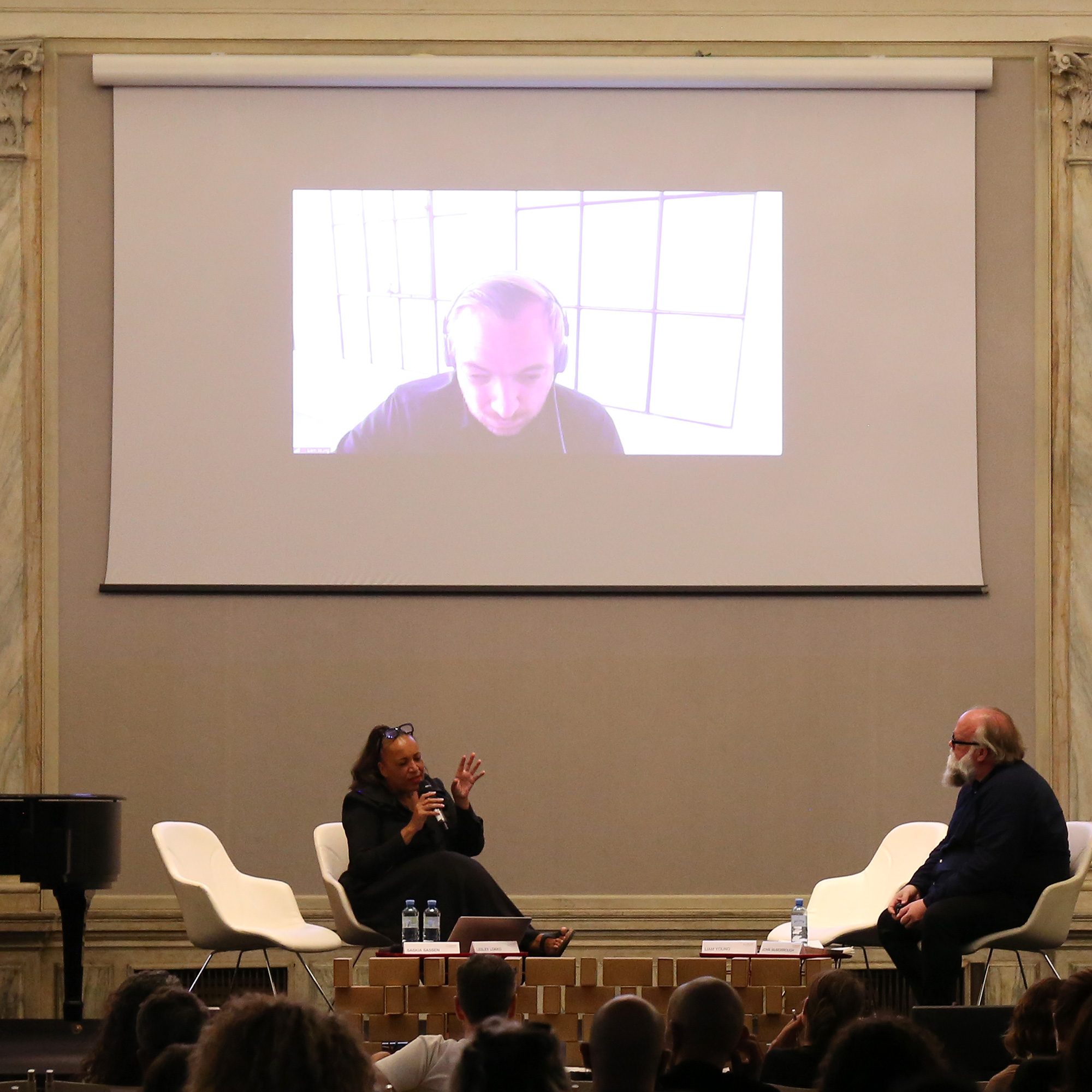
John McMorrough: I am really honored to be here and in the company of people whose work I’ve followed so closely. To begin, I’d like to hand the discussion over to Liam, who is based in LA but here with us via Zoom.
Liam Young: I’m a speculative architect. I tell stories with and about space. Here in LA, I also design environments for the film and television industry. I do this because I believe that by creating fictional worlds and stories about cities, we can connect emotionally to the ideas and challenges of our urban futures. Across the past year I’ve been creating Planet City, a film, a book, and just recently a TED Talk set in an imaginary city for ten billion people—that is, the entire projected population of the earth in 2050. We developed the project in response to the rising red line on the graph of climate change, because we’re interested in how world-building and storytelling as spatial and aesthetic practices can do more than just visualize this data we know so well. These approaches can play a role in dramatizing this data, and this is something we as architects or visual storytellers can really be a part of; in speculative cities we can immerse ourselves in the various consequences of the challenges we face today. They can be cautionary tales or road maps to an aspirational future. We’ve created this film to imagine what it would be like to stand alongside the canals of such a city, to immerse ourselves in the thought experiment that is Planet City.
We’re trying to explore what it would be like to be one of the ten billion people who live here, to hear the hums and crackles of flickering blue and red LEDs that illuminate the lower reaches of the city’s farm fields. It’s based on this notion from five years ago when the biologist E O Wilson proposed a new world he called Half Earth, which was a plan to stave off mass extinction by devoting half the surface of the earth completely to nature; thereby consolidating human development to the other half that would remain.
This is where the project of Planet City really began. We started to design and visualize this radical reversal of our planetary sprawl. But we soon realized we could go much further because in its most provocative form, if we were to reorganize our world at the intensity of the densest cities that actually already exist, Planet City could really occupy as little as 0.02% of Earth, much smaller than Wilson’s 50% Earth. Could we imagine coming to such a global consensus to retreat from our vast network of existing cities into this one hyper-dense metropolis.
This imaginary city would allow us to surrender the rest of the globe entirely to nature, to return stolen lands, and rewild in our wake. We imagined the outcome being this new national park of the world to be visited and tended, rather than engineered for extraction like so many of our existing landscapes. The invisible lines that once divided us would soon fade beneath this planet of trees. In the streets of Planet City, we can begin to start to prototype a lot of the necessary lifestyle changes that would be required to sustain human life on the planet. To build Planet City we would remine our existing cities rather than virgin ground. The world’s shipping fleet that once scattered matter ripped from the earth across our malls and storefronts could be radically reversed and repurposed to bring all this material back together again in the geological strata of this new city. The ghosts of nation-states would give way to new neighborhoods formed around shared cultural practices, and new myths of care, belonging, and recreation.
This fiction, however, began with the travel and research made in the other part of my practice, Unknown Fields, a documentary studio I’ve run from London with another architect, Kate Davies. The studio travelled to some of the mega-scale renewable energy and agriculture sites that already exist around the world: the largest thermal solar plant, located in the Mojave Desert; the illuminated indoor farms projecting crops from Siberian winters; the most productive wind energy network in Guangzhou, China. In uncovering these monumental infrastructures, we learned that many of the technologies required to regenerate our climate already exist today, they just lack the political will or cultural investment required to roll them out at meaningful scales. In Planet City, we simply remove the political roadblocks or the lack of cultural investment that currently holds them back, and we visualize them at global scales.
Both the Planet City book and film try to explore what it means to ground imaginary worlds in the real science and technology of the present moment, allowing us to project ourselves into such a future. Because in the end, Planet City is not a proposal. It’s a provocation, a thought experiment that shows us we don’t need to tread so hard across the earth. If we can start to imagine these systems working at the scale of ten billion, then the only thing standing in our way of rewiring and consolidating existing cities is ourselves, our own biases, blind spots, politics, and prejudices. In many ways, we have all been living in a planetary-scaled city all along. We have urbanized the planet from the scale of the cell to the tectonic plate.
Planet City is entirely imaginary, but at the same time it’s a project that’s already here. It’s simultaneously an image of a possible tomorrow and an illumination of the environmental questions and challenges we face today. What we’re trying to do at the end of our science fiction wanderings through such a speculative city is return to our own cities and look back at them again, but with new eyes. It’s a journey that’s really a call to arms, asking us to collectively imagine and actively visualize our possible futures, imaginary worlds in which we can all begin to shape where we might want to go next.


Lesley Lokko: I should say upfront that I’m really honored to be in the presence of people whose work I’ve admired, but I’ve never actually had the opportunity to meet. Instead of showing visual material, we’ve been asked to make a short statement or declare a position in relation to some of the content from the book. One of the reasons why I typically arrive with visual material is because I feel slightly handicapped speaking in the Global North. I’m from West Africa. We are very rarely at the table in any way, shape, or form. Visual material is therefore a way for me to somehow show you some of the environments in which I live and work, which would otherwise, I think, be invisible. So, for me, the inability to show you this, I have to say, is a real hindrance. I’m always a little bit wary of making statements, partly because I find that I frequently change my mind. But also, the topic of the urban is, for me, such a complex issue that I find it almost impossible to encapsulate my thoughts in a single statement, so I wind up having many statements.
I think the title, forA on the Urban, is really important because there are many urbans. I’ve lived for long periods of time in cities on four continents: Accra, London, Los Angeles, Johannesburg, Chicago, Edinburgh. To try and find a thread that connects those cities, or connects them in a way that allows me to understand those cities, has been to almost impossible. Creating fictions as the means of understanding the city has provided some context for describing scenarios, experiences, paradigms that are actually very different.
So, I wonder what does it mean to use a language which we think of as universal to describe conditions, environments, ways of seeing and understanding in our built environments that are very, very different? On the one hand, we use the same vocabulary. We talk about forms, about buildings, infrastructures, transport. But in different locations those things mean completely different things. So, part of this journey of meandering through fiction, through teaching, through building, and designing has been an attempt to find both a vocabulary that can contain this difference—these very disconnected ways of understanding the world—but also explain them in ways that students in particular will understand.
For me, the writer or theorist whose description seemed to cover the broadest possible spectrum has always been Richard Sennett. He has an almost uncanny ability to unpack complex ideas around politics, governance, finance, or economics and put those things side by side on the table in ways that are deceptively simple. I have several quotes by him that I want to talk about. One is, “The city is a human settlement in which strangers are likely to meet.” It’s made me think about what we mean by the term strangers; not just someone who is not like you, but someone who holds very different values, very different understandings of how to be in the world.
The second quote is the “connection between the urbanist and the urbanite lies in practicing a certain kind of modesty, living among many, engaged in a world that does not mirror yourself.” So, what does it mean to be surrounded by people who are not like you? I think Sennett’s understanding of things like etiquette, language, rituals are key tools for understanding how to negotiate those differences.
forA uses a very clever conceit in the best possible sense of the word, which is this idea of keywords almost signposting many of these differences without ever having to explain their relationships or their connections to each another.
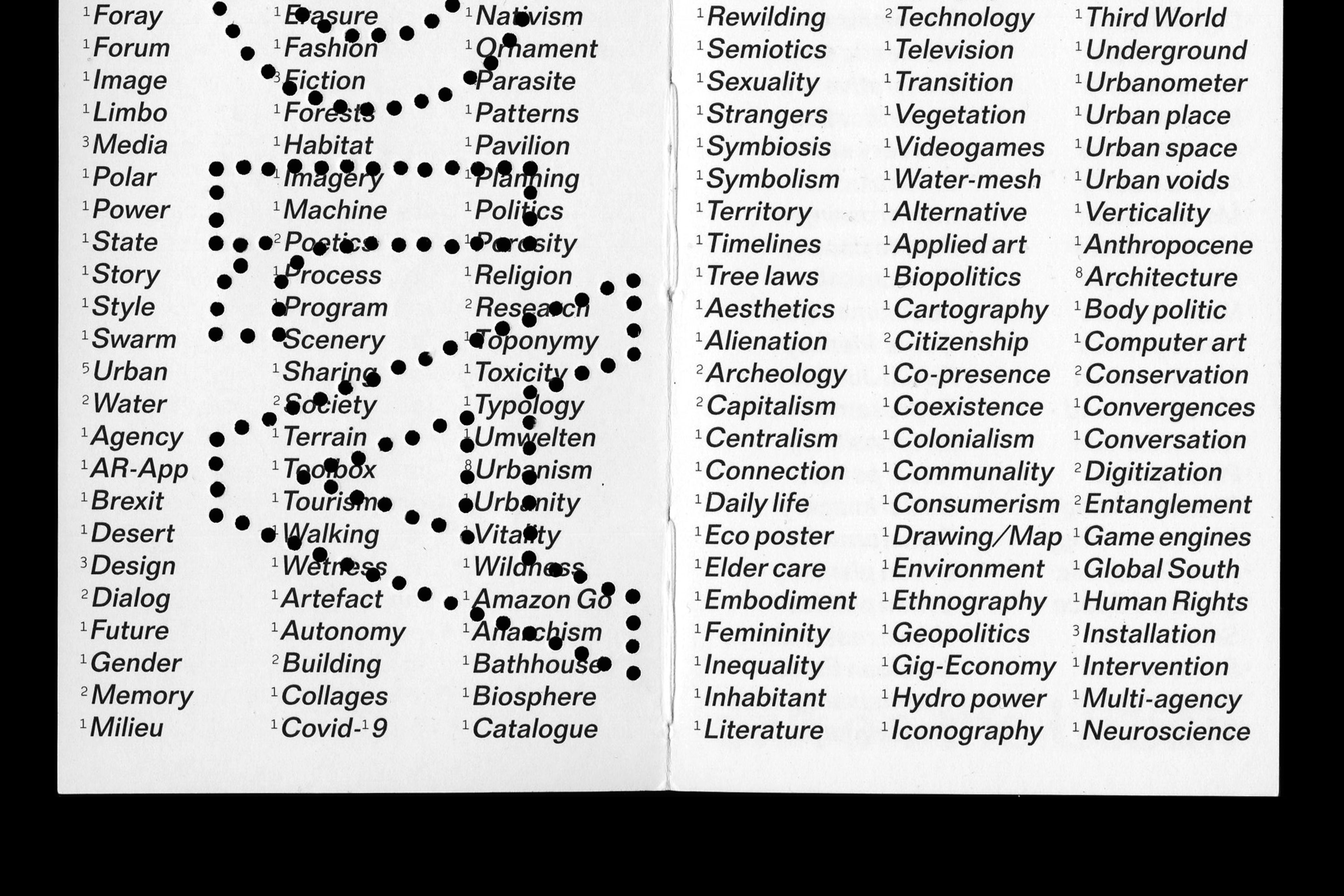
I took six key words from the readings that I made:
Fiction
Imagination
Acquisition
Possibility
Inequality
Density
For me, these six words, out of the many that have been put on the table, seem to sum up both the contradictions that are inherent in our understanding of the urban and the creative and imaginative possibilities that the urban gives us. I’m going to read some of the words that I wanted you to be able to take away from this, which for me sum up the tension between being in urban environments that are actually worlds apart. In no particular order, these are: urbanity, faith, recreation, tradition, aspiration, joy, rhythm, hope, migration, xenophobia, housing, community, diaspora, spectacle, authenticity, Hollywood, exploitation, pride, mimicry, matriarchy, wealth, ancestry, and then ending with contradiction, complexity, confusion, and creativity.
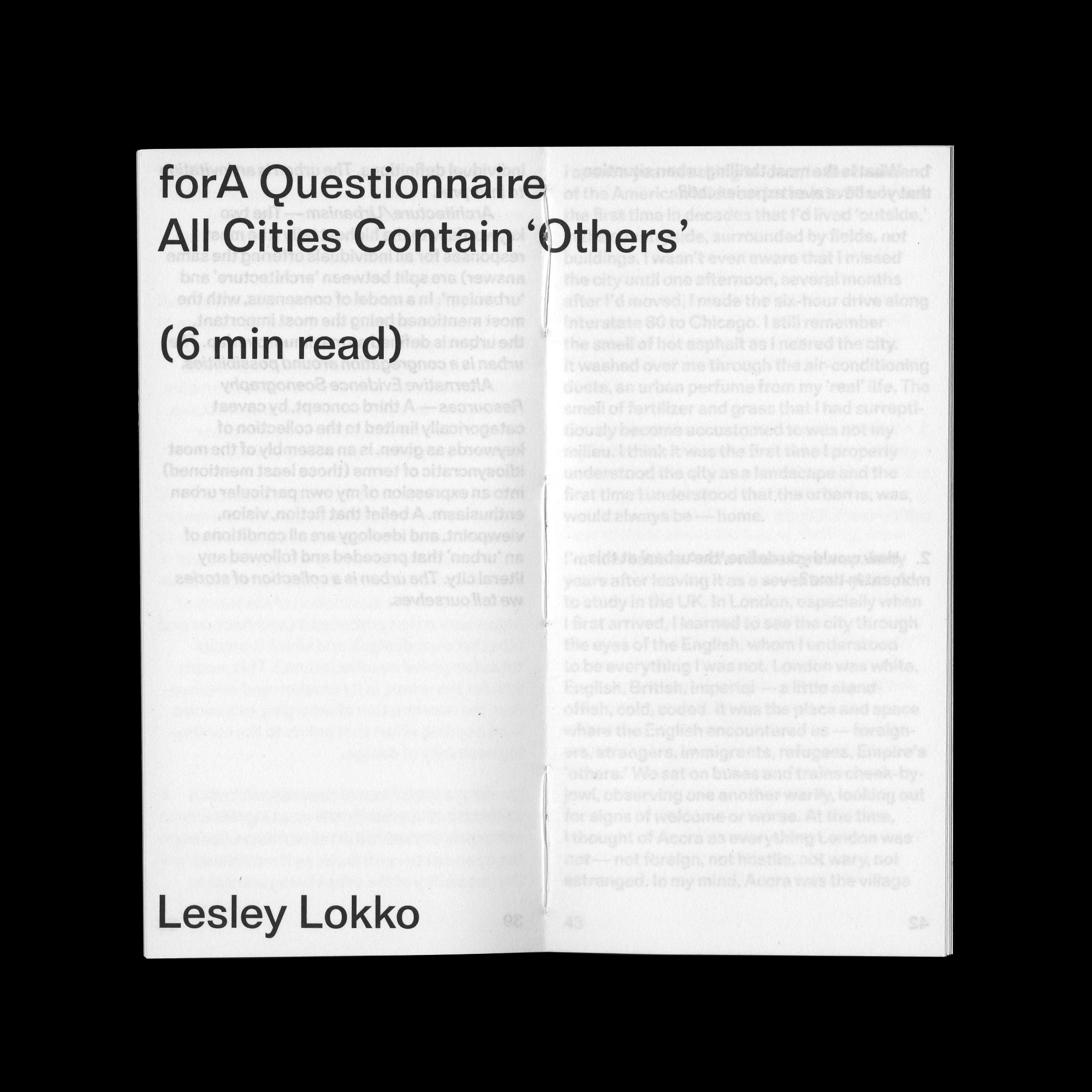
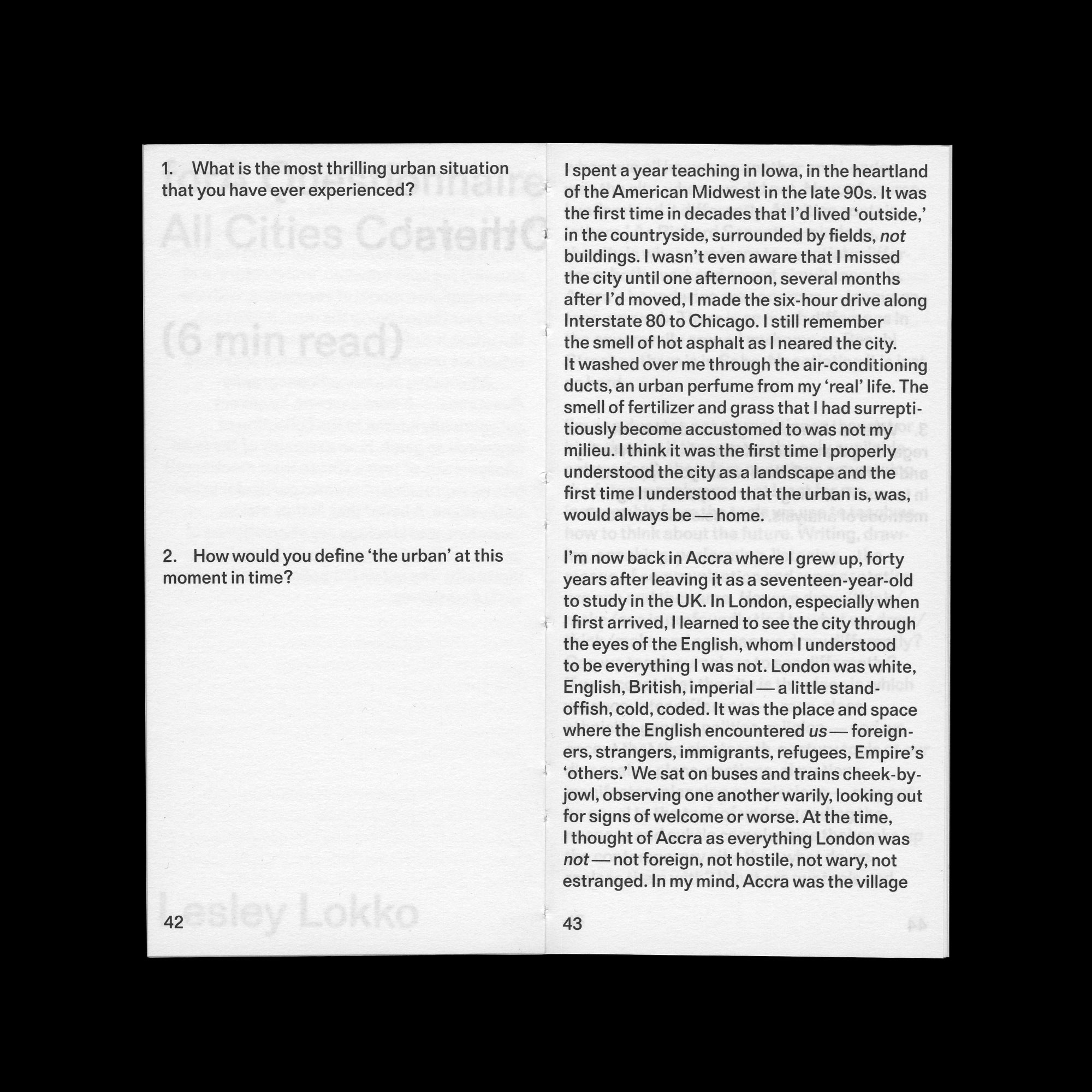
JM: I had the opportunity to read everyone’s contributions to the journal and wanted to follow up on yours, Lesley. It’s called “All Cities Contain ‘Others’” and written from an autobiographical perspective, looking at the way you interface with different cities and landscapes and find a connection between them. There’s a beautiful line in your piece where you talk about the inadequacies of the plan and the section. You describe them as nineteenth-century tools. I wonder if you could talk a little bit about what the new tools might be, especially in the context of your role as an educator, where tutors are charged with providing instruction, manuals, or tools of some sort.
LL: I’ve said this so many times, and I really do sound like a broken record, but if I had a dollar for every time somebody in my career, both as a student and as an educator, said to me, “Is that architecture?” I could have retired 25 years ago, very rich. From the get-go there’s been an obsession about what is and what isn’t architecture. That obsession, I think, has really curtailed the tools we use.
Plans, sections, and elevations are really useful mechanisms for instructing someone to build something. They’re not terribly useful for getting something that is not yet formed out of one’s head. So, this tension or pressure of trying to take ideas that don’t exist comfortably within the architectural canon and translating them into something that we can all read as architecture—for me, it almost stymies the project. The closest or the most explicit example of that was working with African students who often do not have the same readings of space as European students. This may be true for many other parts of the world. These are the two parts I know well.
I realized early on that if I was asking students—especially African students—to explain something about space, light, material, or form in a language that wasn’t able to hold the complexities of what they were trying to describe, then asking them to do that in plan, section, and elevation almost killed whatever it was that was coming. Asking students to work through text, to work through voice, to work through sound, to work through film, to work through all kinds of other mediums because the media are there (it’s just that they’re not there in architecture), suddenly allowed a new language, a new vocabulary, a new understanding of space to emerge.
As soon as it emerged the first question was: is that really architecture? For me, that’s like killing the cat before it’s even out of the bag. So, I’m very critical of the tools we have because I do think that they shape our own imaginations.
JM: So, the point is that the given tools create a restriction. There is not some discrete set of other tools out there, but simply other tools that could be adequate in various ways.
LL: Absolutely. I think one of the key issues at the moment is the search for something new, the search for something different, the search for something that we have an inadequacy to describe. But the pressure of having to lay new tools on the table is almost killing the project. It’s not the new tools that we’re looking for, but the space in which we explore what those tools could be.
JM: This draws a connection with Liam, as someone who has explored an expanded range of tools in filmmaking. Planet City gives vignettes of those systems in play as a lived experience to expand our sense of what the urban could be. Without making you responsible for every technology employed, I’m curious, Liam, about the cultural imagination that informs it. I was especially taken by one still from the film that shows people in a laundromat dressed in exotic costume. In the text you describe an emergence of myths of care and community. I’m wondering if you have a vision of the mechanisms by which these things would emerge or these interplays might happen, or is that not part of the purview?
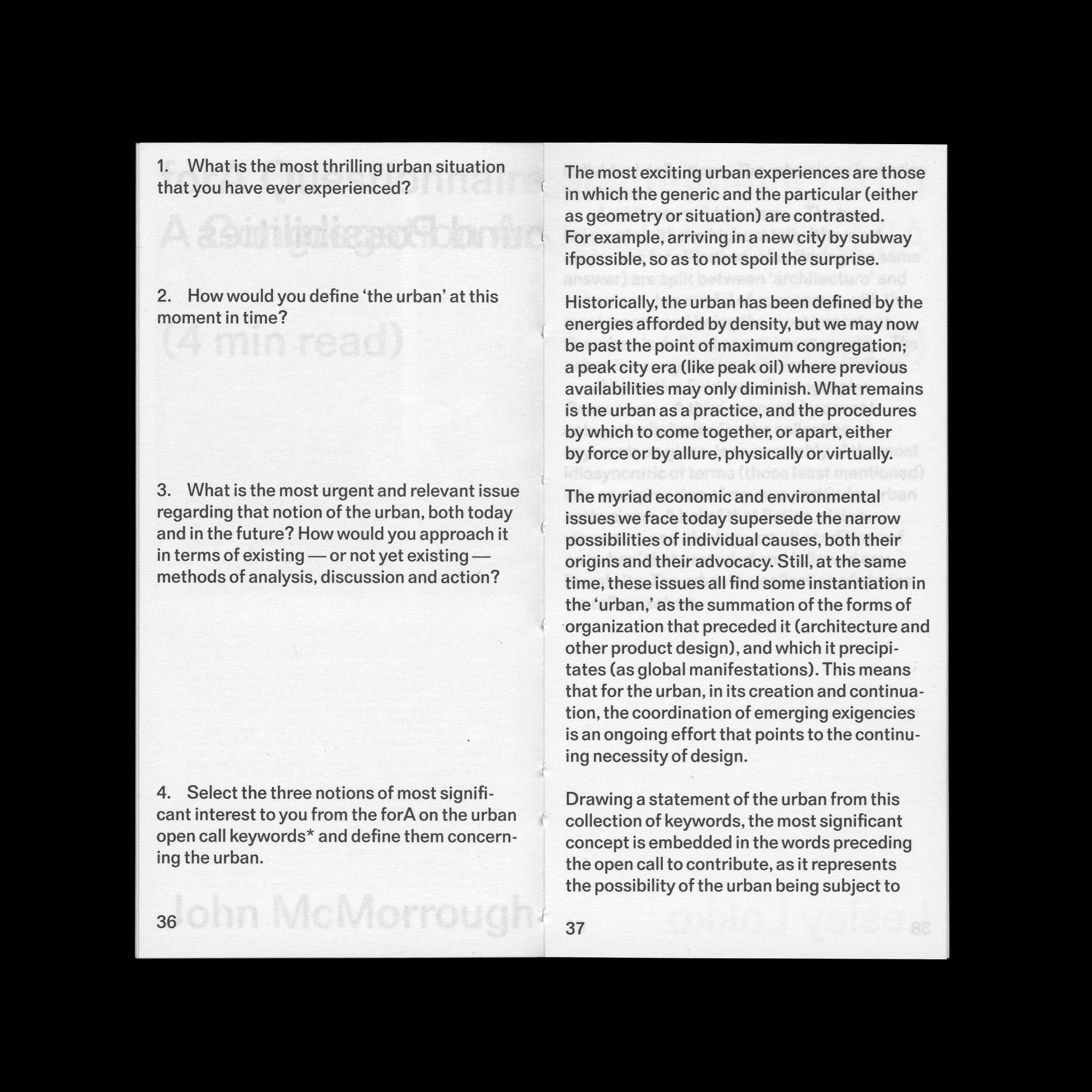
LY: Essentially I operate in a currency of city fictions. For reasons that Lesley was just describing, long ago our practice moved away from the plan and section—entirely coded mechanisms that take us years of education and privilege to understand. Yet, there are other more public mediums that architects often ignore: the screens we turn to as soon as we wake up; when we are old enough we are put in front of the television; we fall asleep in the pages of a novel; or spend our time in cinemas laughing and crying at the filmic image. These mediums of popular culture—these mediums of story—are so profound and powerful, it seems almost scandalous that if as architects and urbanists who value the ideas we’re putting into the world, we don’t try and co-opt those mediums to connect with people outside of our normal audiences. Otherwise, we’re just screaming into the void and lots of (dark lecture theaters), locked within the discipline, talking just with each other about our great ideas. It’s an entirely pointless and vacuous exercise if we don’t embrace ways our ideas can resonate with a wider public.
I’m here in LA in a context that produces urban fictions for the most part, but typically those visions are cyberpunk dystopian narratives. An image of a 1980s-style cyberpunk Blade Runner is shorthand for how any future-y stuff looks. This is what we are told the world we’re walking into might look like. Typically, the stories we tell replay the monomyth and the hero’s journey, singular white males overcoming some mega corporate conglomerate or fascist dystopia . Planet City is trying to be an antidote to those images, instead focusing on the possible cultural life of the future city.
Planet City is really a city symphony, a filmic portrait which captures the life of the city, particularly focusing on a 365-day festival that takes place within it. We’re capturing the city in a moment of carnival and celebration as a means to talk about emerging cultures and social imaginaries. One of the first exercises in Planet City was to map every cultural practice and festival that exists on the calendar. What we see is that at any given moment in any given day there’s a huge amount of things going on. So, if you put everyone collapsed together in a single moment of density, you have this endless festival procession and rich cultural life and that’s really what we’re trying to capture.
The creation story of the city itself is involved in that story of culture. We don’t imagine some unilateral UN governing body or nation-state declaring Planet City a thing, and we are all forced to pack our bags and move there. What we see at the moment is the absolute failure of the nation-state to do anything meaningful in response to climate change. So, we imagine and prototype a global consensus that emerges across the network using precedents like the global climate strike or the women’s marches as ways that humans have organized at scales never before seen. These citizen movements start to form a city in response to the void and vacuum of any leadership from traditional political systems. The whole project has really been about trying to prototype the sorts of cultural mobilizations that need to happen to dig ourselves out of the hole we’ve created.
JM: Yours and Lesley’s responses bring up the topic of audience. When we think about the urban audience, it includes all of us in various ways. I guess I have another question on the occasion of this publication to think about the audience for your film or your writings and teachings; when you write for something like this—that is, writing and thinking about the urban—how do you envision that particular audience? We want to reach everyone in a way, but we also know that we have publications and venues that deliver certain messages to certain groups. I’m wondering if an editorial vision of the audience comes into play.
LL: When I started writing fiction, one of the things my agent said to me was, “Do not think about who’s reading you.” If you think too hard about your audience you will lose your own voice. Architecture and education are a little bit different because you do have to think about how what you’re doing is going to land. There’s some dance that goes on between you as the creator and the author of the work and the reading of that work by others, who in turn influence how you speak, write, etc.
The difference, I think, between writing and designing and film has to do with the length of time of the feedback loop. I found that trying to write about a city as an author is very different than trying to design a city as an architect or as a visual person. So, there’s something about the medium that changes the way that you describe it. But with a novel, you probably don’t start to get feedback for about a year. It means there is quite a long gap between the thing that you put out in the world and when that loop comes back to you. In the teaching studio, it’s almost immediate. It’s very direct. I think with the film, as Liam was saying, you’re very easily able to tell the effect and that changes how you come to the material as the creator. But one of the things that I’m increasingly suspicious of (and I think suspicious is the right word) is that there are multiple audiences out there in the world who receive information about the city in very, very different ways.
If I think about where I’m from, West Africa, one of the most visceral ways of understanding the city for people who’ve never actually been to the city is through the Nollywood film industry. This is essentially an industry whose remit is not to teach you about the urban, but the urban features very strongly in its films. These films are watched by people in rural areas who think that this is what the city is. So, that gap between the message the filmmaker is trying to send out and who’s receiving it and what they think of it—and then what they do when they come to the city—is really complex.
I think there is another language—maybe it’s a third language that is somehow struggling to emerge—which is trying to translate these multiple discourses, ideas, and readings of the city in ways that make it legible for more than a niche population. I’ve said this before: we tend to use very universal terms about the city as if they were global. Actually, they’re not at all. What “public” means in one context is incredibly different from what it means somewhere else.
I think everything begins in language. If you cannot articulate it, you cannot think it. We don’t speak a universal language about the urban. I think we pretend we do, and I’m interested now in the real specificities of what a word means in one language and context, and what it means when taken out of that context.
LY: We’re very good at talking to each other in rarified rooms like this one. We’re also really great at publishing each other’s books. But what’s a good print run on an architecture book? 1,500 maybe is an average? For Planet City we published 3,000. Yet on any given Wednesday night at 3am there’s one million people watching an infomercial for a thigh blaster. You know what I mean? Similarly, two days after Planet City was published as a TED Talk we had more than 1.3million views. I don’t know what those numbers really mean, but I’m certainly sure that there are more people watching Planet City as a filmic fiction than there are hanging out in a boutique art bookshop buying the damn book.
The scales of operation that we work at in the mediums that are native to us as architects and designers are so niche and minute. It’s crippling. Today the agents involved in actually making the city are so much broader than that. This question of audience has really been behind my entire trajectory as an architect, or my escape velocity, as it were, in search of audiences at scales that might be meaningful in effecting change.
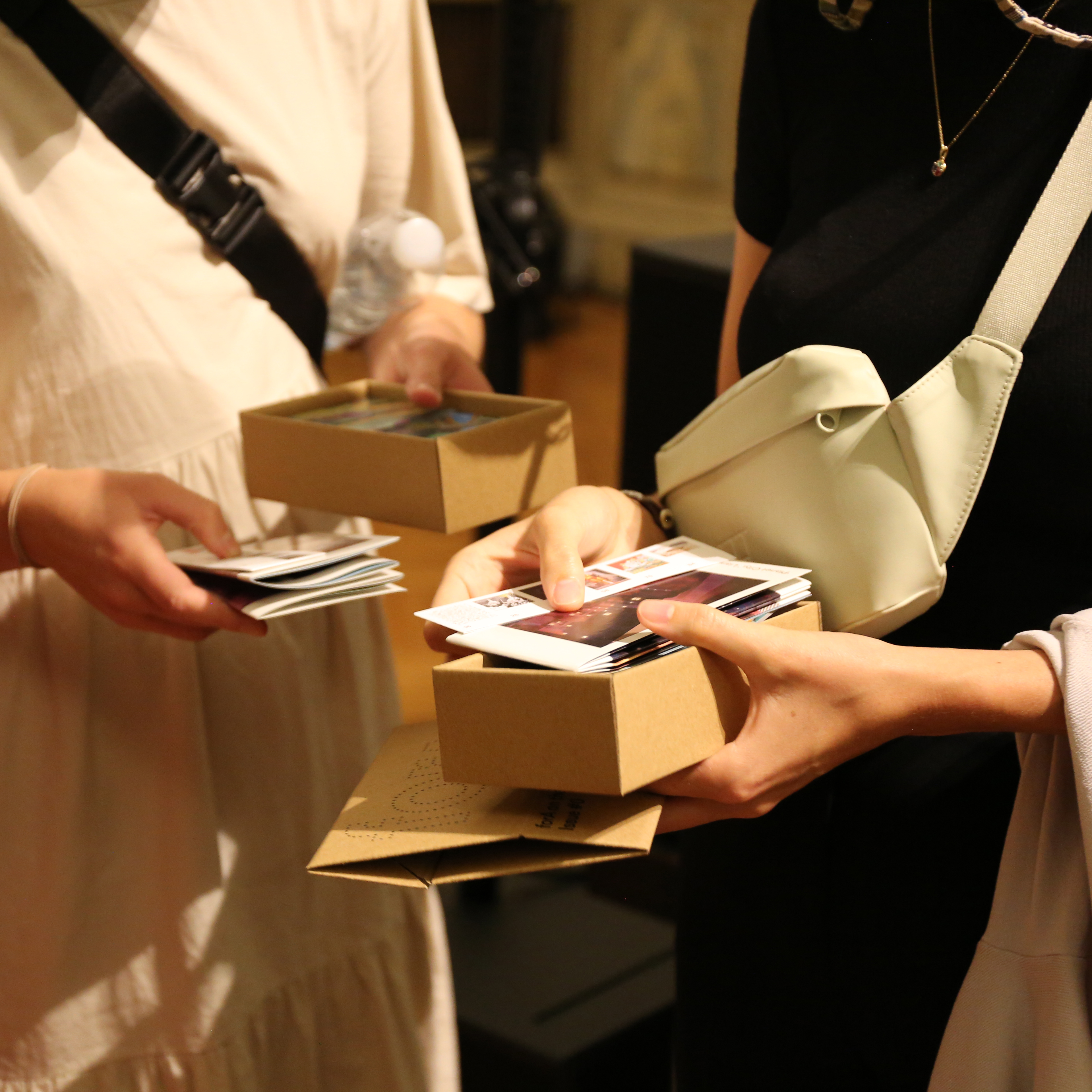
JM: You both have these really comprehensive views of looking at other mediums and thinking about the city. What do you think are the most pressing specific topics when it comes to addressing the urban in the future, and what should forA be addressing?
LL: For all the criticisms of architecture and the ways we teach, I have to say that our training is unparalleled. I would not be able to write fiction had I not trained as an architect. That may seem like a contradictory statement, but there is something about the training of how to look at complexity in ways that allows complex ideas to sit alongside one another. These complexities don’t have to be resolved, but you construct the framework that allows them to thrive.
I don’t know that I have an answer for what the journal should look at. But I do think I have an answer for how the journal should look at it: that is, I hope it continues as it started, looking at something almost three-dimensionally, as if through the lens of time. In the end I think this unearths a richer, more complex, more creative understanding of what’s at hand. In the past year or so I’ve noticed that there is an appetite to understand process that maybe wasn’t there five years ago— and maybe this a result of COVID and possibly the climate and Black Lives Matter protests. I’m hearing people talk more about how one arrives at a solution and less about the solution itself. Architects are uniquely well placed to talk about process. So, it might be that the next issue doesn’t use text; maybe it uses a documentary or some other medium to examine what this process is because I think these are the tools that will help us think about the twenty-second century.
LY: One of the conferences that I’ve always wanted to put on but haven’t got around to yet is an Excel conference where none of the speakers can show images. All they can do is talk about their practice through the medium of an Excel spreadsheet as a means to try and get into the idea of models and economies of practice. Essentially, how do we organize our lives to make the type of work we want to make and still pay the rent. I run a Master’s program at SCI-Arc, and while it sits under the roof of an architecture school, what I’m doing is helping people with architecture and design backgrounds evolve or transition out of traditional forms of practice. They go on to work in the entertainment industry, or in video games, as storytellers, worldbuilders, filmmakers and games designers or technology consultants and futures researchers.
We make work, obviously, but this deals with two areas: that of speculation—the story the students are telling—and the idea of their own practice as the project. I always loved the idea of a conference that’s just trying to talk about models of practice independent of the work that we produce and see that that exercise as being a design process in itself. And so I’m interested in what it would mean for an architectural urban journal to really try and unpack that question, not by throwing building designs at every problem, but by serving as a forum or a space that is open to all of the different ways that people with architecture and urban training operate out in the world, and from this find a way of saying that these alternative forms of practice, which we typically think of as being on the margins of the profession, are actually dead in its center. And in fact the journals that show plans and sections and photographs of buildings are really documents of the periphery.
Most of the graduates coming out of architecture schools or at least the schools that we would highlight or foreground don’t move into traditional models of practice at all. That idea of graduating, sending off your portfolio, getting a job as an assistant or intern and working your way up and becoming a project leader or director—it’s now essentially a luxury model of practice for those who can afford it. It’s not to say that this shouldn’t exist, but it shouldn’t be the dominant model for how we do what we do. So, trying to create a platform or a forum for these alternative models of practice and trying to bring them into the mainstream—because they totally are—would be an interesting ambition.
Andrea Börner: I have one question. When you were both elaborating so beautifully on audience and then also bridging back to media, I was missing something: here we are in Venice, a city that is a kind of fiction of its own. I don’t know if you should call it the physical space, or reality, or the urban—this wasn’t mentioned, but it is there. What about the audience in the real city?
LL: I think I kind of understand what you mean, and the only way I can even respond to that is to respond to it very, very personally. For me, growing up moving between Ghana and the UK every three or four years as a child, one of the things that was most apparent to me was that when I came to Europe, Europe had a very strong sense of itself as a place, and that sense of itself came through books, films, media, and the fictions that were written about the place. When I returned to Ghana, there was no such milieu. I understood it viscerally simply by being there in the street. There wasn’t a second reading of the space. Now, that has changed partly because media has changed. When I go back to Accra, I see young Ghanaians understanding their space not just through WhatsApp and Instagram and social media, but also by understanding Accra in relation to other places. It’s become almost a double vision. They see their own place through the lens of somewhere else that in turn informs how this place is. It’s not exactly pastiche, and it’s not exactly copy. It’s something in-between.
As an educator I want to understand what that process is of seeing yourself refracted through the lens of somewhere else where you are not always in control of the narrative that’s being told about the place that you’re in. So, I think that this other media around us is hugely important in helping us to understand both where we are and where we want to be. What happens when you’re in a place where you’re not in control of that media? What happens to the city then? At the moment, I’m living in a city that is experiencing those consequences because the speed of development, change, density, and structures is faster in a sense than the citizen’s ability to comprehend it.
JM: Liam, adding onto Andrea’s question, could you speak not only about the notion of expanded audience, but also expanded makers—in other words, the democratization of tools and tool sets, and how you feel that is influencing either your work or your teaching, particularly the ability to make videos and films.
LY: The opening line of my essay in forA is “All cities are fictions.” I would throw out a note of caution about describing this fictional reading of cities as different from some “real” experience of city. In the same way, there is no digital experience versus a physical experience—all construct the realities through which we move. The best way of starting to understand this city is through the fictions we’ve created about it. The physical definitions of cities are so nebulous and in themselves undefined, but they really come into focus as shared narratives.
In response to your question, John, the sheer amount people who are telling these stories and making these fictions is now extraordinarily vast, for better or worse. I haven’t been able to escape America for the last 18 months, so I’ve had these front row seats for the American apocalypse: from the protests in streets after the murder of George Floyd to the death throes of the Trump administration. We’ve seen the mediums of contemporary fictions, the mediums of contemporary mythology, and social media thoroughly dividing a nation.
What we’ve seen is that it’s all really just an arms race. The best fiction is winning. That might be fictions around vaccinations, or fictions around a nostalgia for a past that never existed—all of these stories have become our lived reality. The America of today is entirely constructed through narratives and fictions created by memes, misinformation, alternative facts and anecdotes, created by people that previously would not have had a voice of authority, but through the megaphone of the platform economy we now occupy, these fictions have become lived experience. We’ve called it a network bubble, but really, in our post-truth world it’s an urban construct of stories. We can all build this house of fictions in the way that we most feel comfortable, and that’s what we’re doing.
Lesley Lokko is the founder and director of the African Futures Institute (AFI) in Accra, Ghana, an independent postgraduate school of architecture and public events platform. She was the founder and director of the Graduate School of Architecture, University of Johannesburg and the Dean of Architecture at The Bernard & Anne Spitzer School of Architecture, CCNY. She is the editor of White Papers, Black Marks: Race, Culture, Architecture and FOLIO: Journal of Contemporary African Architecture, and the author of eleven best-selling novels. She is a founding member of the Council on Urban Initiatives, co-founded by LSE Cities, UN Habitat and UCL Institute for Innovation and Public Purpose, Visiting Professor at the Bartlett School of Architecture, UCL, and Curator of the 2023 Venice Architecture Biennale.
John McMorrough is a principal at studioAPT and an associate professor at the Taubman College of Architecture and Urban Planning at the University of Michigan. He has taught at the Yale School of Architecture, Ohio State University, the University of Applied Arts Vienna, and the Graduate School of Design at Harvard University. His writing and design work have appeared in Perspecta, Log, Volume, Praxis, Threshold, MAS Context, and Flat Out.
Liam Young is a speculative architect, director and BAFTA-nominated producer who operates in the spaces between design, fiction and futures. Described by the BBC as “the man designing our futures,” his visionary films and speculative worlds are both extraordinary images of tomorrow and urgent examinations of the environmental questions facing us today. As a worldbuilder he visualizes the cities, spaces, and props of our imaginary futures for the film and television industry and with his own films he has premiered with platforms ranging from Channel 4, Apple+, SxSW, Tribeca, the New York Metropolitan Museum, The Royal Academy, Venice Biennale, the BBC and the Guardian. He has taught at the Architectural Association, MIT, Princeton University, and now runs a Masters program in fiction and entertainment at SCI-Arc in Los Angeles.